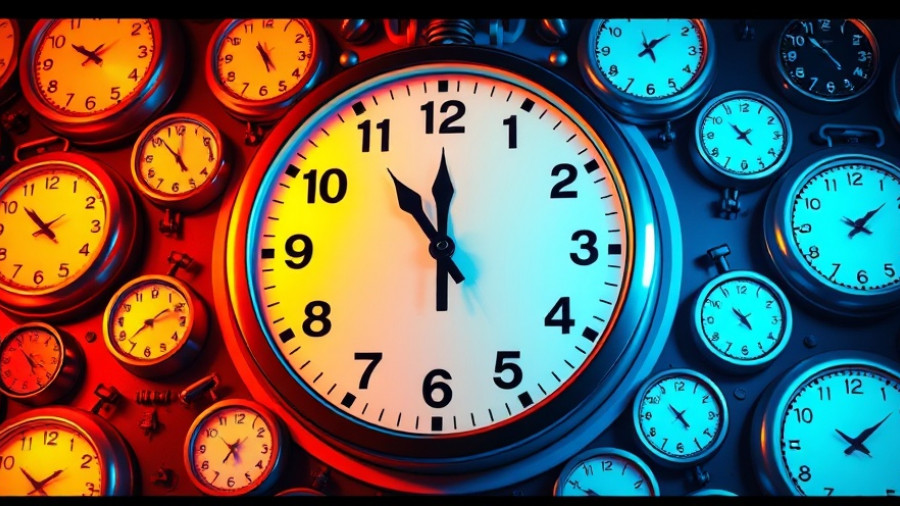
Boosting Productivity with ChatGPT: Your Ultimate Tool
We've all experienced moments where our productivity takes a nosedive. You might find yourself endlessly scrolling through web pages, hopping between tabs, and drinking copious amounts of coffee, only to realize that half the day has slipped through your fingers. Fear not—thanks to AI technology, specifically ChatGPT, you can reclaim your time and become immensely productive. Here are five expert-backed prompts that will reinvigorate your workplace efficiency, all inspired by popular self-help literature.
1. The Eisenhower Matrix: Prioritize Like a Pro
The first prompt is a game changer for prioritizing tasks: "Here's everything on my plate: [dump your entire list]. Categorize each item into the Eisenhower Matrix (Urgent-Important, Important-Not Urgent, Urgent-Not Important, Neither). Then tell me: what to do today, what to schedule for later this week, what to delegate or automate, and what to delete entirely. Be ruthless about the 'delete' category." This prompt encourages you to reassess your workload and cut through the mental clutter. By leveraging Dwight Eisenhower's framework, it helps you focus on what truly matters, ensuring you don’t waste time on trivial tasks.
2. Deep Work: Plan Your Focus
Inspired by Cal Newport’s principles, the second prompt focuses on deep work: "I have [X hours] for deep work on [project]. Design a session plan: pre-work setup (5 min), main focus blocks with specific outcomes (not just 'work on X'), strategic break timing, and a shutdown ritual. Include what to do if I get stuck mid-session." This strategy emphasizes quality over quantity, demonstrating that a few hours of concentrated work can yield far better results than distracted half-days. ChatGPT can guide you in crafting a session that maximizes cognitive efficiency—essential for tackling large projects effectively.
3. Weekly Reflection: Embrace Evaluation
This next ChatGPT prompt will have you reflecting on your week: "Build me a 20-minute weekly review checklist for [your role/context]. Structure it in 4 phases: Capture, Clarify, Organize, and Reflect. Include specific questions for each phase and a simple scoring system to track if I'm trending up or down week-over-week." This approach is inspired by David Allen’s popular Getting Things Done (GTD) methodology. By creating a structured evaluation routine, you can better understand your wins and challenges, paving the way for improvement in the coming week.
4. Energy Efficiency: Align Tasks with Your Natural Rhythms
This prompt, rooted in the research of Tony Schwartz, flips traditional productivity on its head: "I'll describe my typical workday hour-by-hour. Analyze this and tell me: when my peak energy windows are, what activities drain me fastest, and how to restructure my day to match tasks with my natural energy levels." By mapping out your energy fluctuations throughout the day, you can learn to schedule demanding tasks during peak energy hours, leading to a more productive and satisfying workday.
5. The 80/20 Rule: Focus on What Matters Most
Lastly, we have the 80/20 principle made easy: "Give me the 80/20 of [insert a topic here]." Rooted in Tim Ferris's teachings, this prompt encourages efficiency by identifying the 20% of inputs that yield 80% of the results. Whether you’re trying to learn something new or plan a workflow, applying this principle can streamline your efforts and amplify your results.
Make the Shift Toward Productivity
Implementing these ChatGPT prompts can fuel an extraordinary shift in your approach to work. Instead of relying on chaotic to-do lists that often make us feel overwhelmed and unproductive, utilizing structured prompts grounded in proven self-help methods can help you take control, prioritize efficiently, and optimize your daily routines. As you strive for a more balanced work-life experience, explore these prompts and give your productivity a well-deserved boost!
Explore these innovative strategies today—and take charge of your productivity journey! Whether you're aiming to streamline your workflow or seek a more meaningful connection with your tasks, these ChatGPT prompts will undoubtedly help you achieve your goals and foster a healthier work environment.
 Add Row
Add Row  Add
Add 




Write A Comment